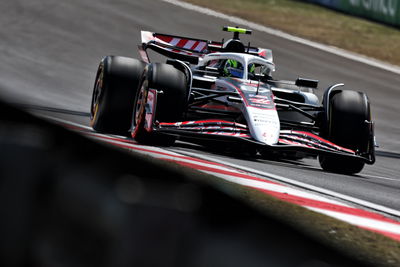Christies to auction Jones' memorabilia.
On 28 September 1980, Alan Jones reached the pinnacle of his career when he clinched the Formula One world drivers' championship with victory at the Canadian Grand Prix in Montreal. Now the trophy he received - and more - is up for sale.
He did this under immense pressure with exceptional courage and determination, overcoming keenly fought challenges from the world's fastest drivers. He remains one of only two Australians, the other being Sir Jack Brabham, to have won the F1 championship.
On 28 September 1980, Alan Jones reached the pinnacle of his career when he clinched the Formula One world drivers' championship with victory at the Canadian Grand Prix in Montreal. Now the trophy he received - and more - is up for sale.
He did this under immense pressure with exceptional courage and determination, overcoming keenly fought challenges from the world's fastest drivers. He remains one of only two Australians, the other being Sir Jack Brabham, to have won the F1 championship.
In 1954, Alan's father, Stan, became the first Australian to win a F1 grand prix outside Australia, albeit in New Zealand, then, in 1959, he won the Australian Grand Prix at the famous Albert Park circuit, which is now refurbished and again host to the F1 Championship race.
Christies will auction the Alan and Stan Jones Collections as part of the 'Sport in Australia' auction in Melbourne on Tuesday 31 July. The vast array of material will be on view in Melbourne at Christie's, South Yarra, from 26 July.
Alan Jones inherited his father's passion for motor racing, and was 20 years old when he went to England, at that time the hub of the sport. His talent and grit caught the attention of team owners and, after a fine first Formula Three debut in Brazil, he worked his way up quickly to be offered a Formula One drive with Hesketh.
His first Formula One Grand Prix was at Barcelona in 1975, and he subsequently drove for Graham Hill, John Surtees, Shadow and then, in 1977, for Frank Williams.
Jones had a fabulous season in 1979, winning more races than any other driver, and was considered desperately unlucky not to win the championship. However, the narrow loss steeled him for subsequent victory. His trademark cool determination came to the fore in the 1980 season with Williams.
He began well, winning in Argentina, where the trophy was presented to him by the legendary Juan Manuel Fangio. He was third in Brazil, but the next three races, South Africa, Long Beach and Belgium saw the drivers' championship lead taken by Renault's Rene Arnoux. Then, in a stunning race at Circuit Ricard, Jones recaptured the lead in the French Grand Prix, later again having to wrest it back from Brabham's Nelson Piquet, who had forged narrowly ahead at Monaco. By Zandvoort, in late August, three straight wins by Jones, each of them ahead of Piquet, put him in front by eleven points. This was in spite of the controversial nullification of the Spanish Grand Prix, also won by Jones. Victory in Canada ensured the Formula One World Championship was his.
At the end of the year, Jones went home and won the Australian Grand Prix, the race his father had won 21 years earlier.
Stan and Alan Jones stand with the Brabham family as Australian icons of motor racing's highest echelon. Their combined achievements span the era which saw Formula One evolve from the remnants of barnstorming 'seat-of-the-pants' post-war racing to the cutting-edge technology and supremely commercial enterprise it is today.
There is little doubt that the individual success of Alan Jones precipitated an astonishing revival of interest in Formula One motor racing in Australia, which had evaporated after the retirement of Sir Jack Brabham in the late 1960s. Following his championship year, races began to be televised, and the attention generated by Jones' exploits provided the impetus needed to ensure that an Australian race returned to the Formula One calendar, first in Adelaide and more recently in Melbourne.
Alan Jones maintains an involvement in motor sport both as a touring car driver and F1 television commentator. Alan's son also has an interest in racing, the third generation of the family to do so. But two lifetimes' trophies have grown in number to the extent that it is difficult to properly maintain and display such a vast collection. Alan feels that, by offering it to the public, he will continue to inspire a new generation of motor enthusiasts to follow and enjoy the sport.
The collection comprises all the Stan Jones trophies including the 1959 Australian Grand Prix Trophy (estimate AUD$3,000-5,000); the Alan Jones Motor Racing trophies including all the 1980 Formula One championship trophies (estimates from AUD$20,000 to 50,000). These include the very first of the only five trophies ever awarded at Caesar's Palace, Las Vegas (estimate AUD$40,000-50,000). Also included are Alan Jones's racing suits, boots, numerous signed photographs and prints.
This is only major collection of its kind yet to have to appeared at public auction and it is estimated that in total it will realise in excess of AUD$300,000.










